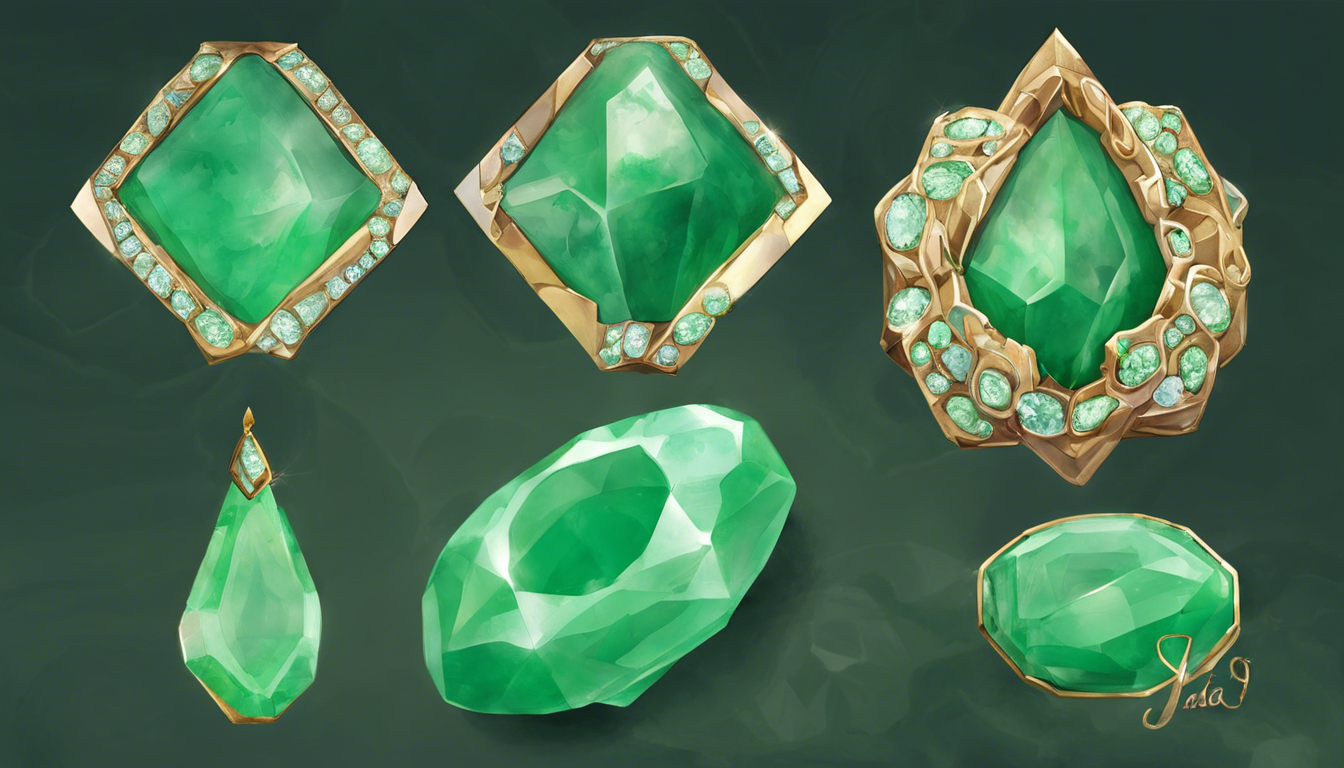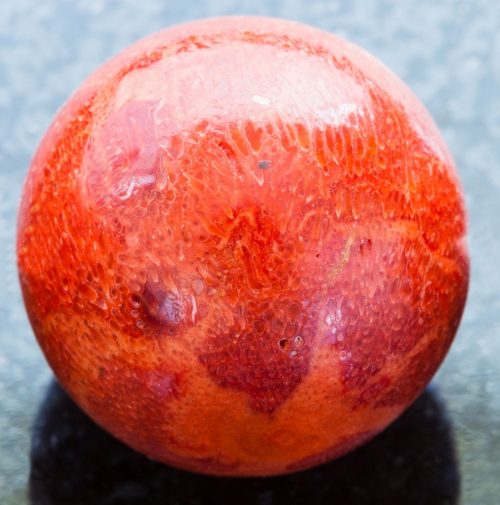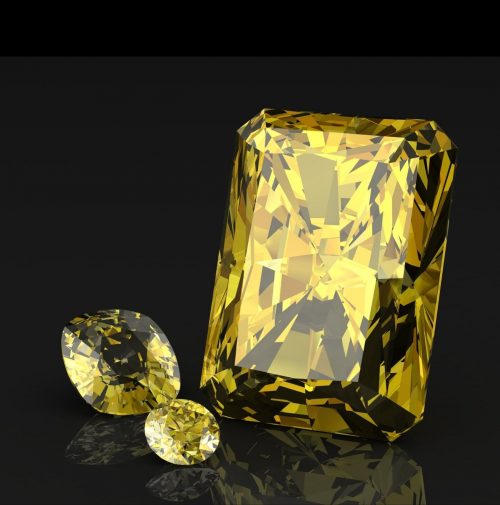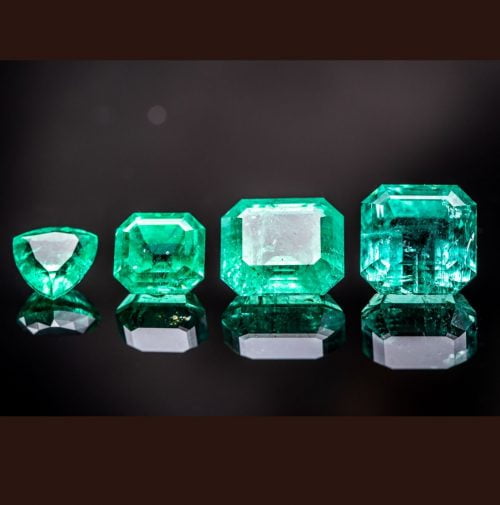The Enchanting World of Jade: Unveiling Its History, Significance, and Alluring Beauty

I. Introduction
Since ancient times, jade has captivated cultures worldwide with its alluring beauty and profound symbolism. In this blog, we delve into the enchanting world of jade, exploring its rich history, cultural significance, and captivating allure.
History and Origin:
1. A Journey Through History:
- Jade’s earliest traces date back to 7,000 BC in China, where it was revered as a sacred stone.
- The Maori people of New Zealand crafted intricate jade ornaments, symbolizing strength and authority.
- In Mesoamerica, jade was associated with the gods and used in ceremonial offerings and intricate carvings.
2. Symbolism and Cultural Significance:
- In Chinese culture, jade represents purity, harmony, and good fortune.
- In Mayan and Aztec civilizations, jade symbolized power, fertility, and the connection to the divine.
- In Islamic tradition, jade is believed to bring prosperity and protection.
3. Healing Properties and Beliefs:
- Jade is believed to possess healing properties, promoting emotional balance, tranquility, and physical well-being.
- In traditional Chinese medicine, jade is used to alleviate kidney and heart ailments.
- Many cultures believe that wearing jade brings good luck, prosperity, and protection against negative energies.
4. Varieties of Jade:
- There are two primary types of jade: Jadeite and Nephrite.
- Jadeite, the more valuable variety, is known for its intense green color and vitreous luster.
- Nephrite, a more common type, is typically found in shades of white, green, and gray.
5. Identifying Authentic Jade:
- Genuine jade feels cool to the touch and has a smooth, polished surface.
- It is often translucent, allowing light to pass through it partially.
- Jade does not scratch easily and has a high specific gravity, making it denser than most other gemstones.
6. Jade in Modern Times:
- Jade continues to be a popular gemstone in jewelry, carvings, and decorative objects.
- It is prized for its durability, versatility, and timeless beauty.
- Jade remains a symbol of elegance, prosperity, and cultural heritage in many parts of the world.
The enchanting world of jade is a testament to its enduring allure, captivating civilizations for millennia. From its rich history and cultural significance to its healing properties and mesmerizing beauty, jade continues to inspire and captivate hearts worldwide. Whether worn as a symbol of good fortune or admired for its artistic splendor, jade remains a timeless treasure that transcends time and cultures.
A. Definition of Jade
- Jade is a gemstone composed primarily of either jadeite or nephrite, two distinct minerals that share similar physical properties and appearance.
- It is characterized by its toughness, durability, and a wide range of colors, most notably various shades of green.
- Jade has been prized and revered for centuries in many cultures around the world.
B. Historical significance
- Jade has a rich and extensive history, dating back to ancient civilizations.
- In China, jade was considered a sacred stone and was used to create intricate carvings, jewelry, and other decorative objects.
- The Mayans and Aztecs of Mesoamerica also highly valued jade, using it in ceremonial offerings, jewelry, and sculptures.
- In New Zealand, jade, known as pounamu, was revered by the Maori people and was used to craft weapons, tools, and ornaments.
C. Thesis statement:
Jade is a revered gemstone with a rich history and enduring appeal. Its exceptional durability, captivating beauty, and profound cultural significance have made it a treasured possession across civilizations and time periods.
II. Geological and Cultural Background
A. Formation of jade
- Jade is formed through a complex geological process involving the metamorphism of various types of rocks, primarily ultramafic rocks.
- During metamorphism, minerals within the rock recrystallize and form interlocking crystals, resulting in jade’s characteristic toughness and durability.
- Jade deposits are found in various parts of the world, including Myanmar (Burma), China, Guatemala, and New Zealand.
B. Varieties of jade (nephrite and jadeite)
- There are two main types of jade: nephrite and jadeite.
- Nephrite is a calcium-magnesium silicate mineral, while jadeite is a sodium-aluminum silicate mineral.
- Nephrite is more common and typically found in shades of white, green, and gray. Jadeite is rarer and more valuable, known for its intense green color and vitreous luster.
C. Cultural significance in ancient civilizations:
- China:
- In ancient China, jade was considered a sacred stone and was associated with purity, harmony, and good fortune.
- Jade was used to create a wide range of objects, including ritual vessels, jewelry, carvings, and decorative ornaments.
- The Chinese believed that jade possessed healing properties and could promote longevity and good health.
- Mesoamerica:
- In Mesoamerican cultures, such as the Mayans and Aztecs, jade was highly valued and associated with power, fertility, and the connection to the divine.
- Jade was used to create intricate carvings, jewelry, and ceremonial objects, often depicting gods, rulers, and other important figures.
- The Mayans believed that jade had protective qualities and could aid in spiritual journeys and communication with the gods.
- New Zealand:
- The Maori people of New Zealand revered jade, known as pounamu, as a taonga, or sacred treasure.
- Pounamu was highly prized for its strength, durability, and connection to the natural world.
- Maori artisans crafted pounamu into weapons, tools, ornaments, and other important objects, each imbued with cultural and spiritual significance.
III. Properties and Characteristics
A. Physical properties (color, luster, transparency):
- Color: Jade exhibits a wide range of colors, with green being the most common and prized. Other colors include white, yellow, orange, red, lavender, and black.
- Luster: Jade typically has a vitreous or waxy luster, meaning it has a glassy or slightly greasy appearance.
- Transparency: Jade can be translucent to opaque, allowing light to pass through it to varying degrees.
B. Symbolism and spiritual significance:
- In many cultures, jade has been associated with various symbolic meanings and spiritual significance:
- China: Purity, harmony, good fortune, longevity, and protection.
- Mesoamerica: Power, fertility, connection to the divine, and protection.
- New Zealand: Strength, durability, connection to the natural world, and spiritual guidance.
C. Value and rarity:
- Jade is a valuable gemstone, with its worth determined by factors such as color, transparency, and rarity.
- Jadeite is generally more valuable than nephrite due to its rarity and intense green color.
- Imperial jade, a rare and highly prized variety of jadeite, is known for its deep, emerald-green color and is considered the most valuable type of jade.
- The rarity of jade and its enduring popularity as a gemstone contribute to its high value.
IV. Uses and Applications
A. Ornamental uses in jewelry and art:
- Jade has been used for centuries to create exquisite jewelry and decorative objects.
- In China, jade carvings and sculptures have been highly prized since ancient times.
- Jade jewelry, such as necklaces, bracelets, and earrings, is popular worldwide for its beauty and durability.
- Contemporary artists and designers also incorporate jade into their creations, combining traditional techniques with modern aesthetics.
B. Ritual and ceremonial uses:
- In many cultures, jade has been used for ritual and ceremonial purposes.
- In ancient China, jade was used to create ritual vessels, ornaments, and other objects for religious ceremonies and offerings.
- In Mesoamerica, jade was used to make ceremonial masks, sculptures, and jewelry for religious rituals and to honor deities.
- The Maori people of New Zealand used jade to create ceremonial weapons, tools, and ornaments that held deep cultural and spiritual significance.
C. Contemporary applications in alternative medicine:
- In recent years, jade has gained attention for its potential therapeutic properties in alternative medicine.
- Some believe that jade can promote healing, reduce stress, and improve overall well-being.
- Jade rollers and gua sha tools have become popular for facial massage, as they are believed to improve circulation, reduce puffiness, and promote a youthful appearance.
- While scientific evidence supporting these claims is limited, jade’s perceived healing properties contribute to its popularity in alternative medicine practices.
V. Economic and Environmental Impact
A. Global production and trade:
- Myanmar (Burma) is the world’s largest producer of jadeite, accounting for over 70% of the global supply.
- Other notable producers of jadeite include Guatemala, Russia, and Japan.
- Nephrite is found in a wider range of countries, including China, Canada, New Zealand, and the United States.
- The global jade market is valued at billions of dollars, with demand for high-quality jade remaining strong.
B. Environmental considerations in jade mining:
- Jade mining can have significant environmental impacts, particularly in areas where mining practices are not properly regulated.
- Mining activities can lead to deforestation, water pollution, and soil erosion.
- Improper disposal of mining waste can also contaminate water sources and harm local ecosystems.
- In recent years, there has been growing awareness of the need for sustainable jade mining practices to minimize environmental damage.
C. Economic significance for producing countries:
- Jade mining and trade can provide significant economic benefits for producing countries.
- In Myanmar, jade is a major source of revenue for the government and contributes to the livelihoods of many people involved in the mining and trading industries.
- In Guatemala, jade mining has played a crucial role in the economic development of local communities.
- The sale of jade also generates foreign exchange earnings for producing countries, contributing to their overall economic growth.
General FAQs for Jade:
What is jade?
- Jade is a gemstone that has been prized for centuries for its beauty, durability, and cultural significance.
- It is formed through the metamorphism of various types of rocks, primarily ultramafic rocks.
- The two main types of jade are nephrite and jadeite, with jadeite being the rarer and more valuable variety.
What are the different colors of jade?
- Jade exhibits a wide range of colors, with green being the most common and prized.
- Other colors include white, yellow, orange, red, lavender, and black.
- The color of jade is determined by the presence of various trace elements and minerals.
What is the significance of jade in different cultures?
- Jade has been revered in many cultures throughout history for its symbolic and spiritual meanings.
- In China, jade is associated with purity, harmony, good fortune, longevity, and protection.
- In Mesoamerica, jade was highly valued for its connection to power, fertility, and the divine.
- The Maori people of New Zealand consider jade, known as pounamu, to be a sacred treasure representing strength, durability, and connection to the natural world.
What are the uses of jade?
- Jade has been used for centuries to create a wide range of objects, including jewelry, carvings, sculptures, and ritual objects.
- In traditional Chinese culture, jade was used to make ceremonial vessels, ornaments, and other objects for religious ceremonies and offerings.
- In contemporary times, jade is still highly sought after for jewelry and decorative purposes, and it is also used in alternative medicine practices for its perceived healing properties.
Where is jade found?
- Jade is found in various parts of the world, with Myanmar (Burma) being the largest producer of jadeite.
- Other notable producers of jadeite include Guatemala, Russia, and Japan.
- Nephrite is found in a wider range of countries, including China, Canada, New Zealand, and the United States.
How can I tell if jade is real?
- There are several ways to identify real jade:
- Color: Natural jade typically has a consistent and even color throughout the stone.
- Transparency: Real jade is usually translucent to opaque, allowing light to pass through it to varying degrees.
- Texture: Genuine jade has a smooth and细腻的纹理, without any visible grains or crystals.
- Hardness: Jade is a hard stone and should not be easily scratched with a knife or other sharp object.
How much is jade worth?
- The value of jade can vary greatly depending on factors such as color, transparency, rarity, and craftsmanship.
- Imperial jade, a rare and highly prized variety of jadeite with a deep, emerald-green color, can command extremely high prices.
- In general, higher-quality jade with good color, transparency, and minimal flaws is more valuable.
Conclusion:
Jade, with its captivating beauty, rich symbolism, and potential healing properties, is a gemstone that has stood the test of time. Whether you are seeking a stunning piece of jewelry, a meaningful gift, or a stone to enhance your well-being, jade is an excellent choice.
At 360 Real Astrology, we are passionate about helping our clients discover the transformative power of gemstones. Our team of experienced astrologers and gemologists can guide you in selecting the perfect jade gemstone based on your individual needs and astrological profile.
We also provide comprehensive guidance on how to use and care for your jade gemstone to maximize its benefits. From cleansing and charging techniques to meditation and visualization practices, we will empower you with the knowledge to fully harness the potential of this remarkable gemstone.
If you are ready to embark on a journey of self-discovery and transformation, we invite you to connect with us at 360 Real Astrology. Our team is dedicated to providing personalized astrological consultations and high-quality gemstones to help you create a life of abundance, harmony, and fulfillment.
Visit our website at https://360realastrology.com/ to learn more about our services and explore our collection of exquisite jade gemstones. Together, we can unlock the hidden potential within you and guide you towards a brighter, more fulfilling future.
Unlock the Secrets of Your Birth Chart with 360 Real Astrology
Your birth chart is a unique astrological map that holds the key to understanding your life’s purpose, strengths, challenges, and hidden potential. Through a comprehensive birth chart reading, our experienced astrologers can provide you with deep insights into your personality, relationships, career path, and overall life journey.
Our birth chart readings are personalized and tailored to your specific needs and circumstances. We take into account the positions of the planets, signs, and houses in your chart to gain a comprehensive understanding of your astrological blueprint.
During your reading, we will explore:
- Your innate strengths and weaknesses
- Your unique talents and abilities
- Your potential career paths and life purpose
- Your relationship dynamics and compatibility with others
- Your upcoming opportunities and challenges
- Your karmic lessons and soul’s journey
We will also provide guidance on how to harness the positive influences in your chart and mitigate the negative ones. Our goal is to empower you with the knowledge and tools you need to create a more fulfilling and harmonious life.
Book your astrological birth chart reading today and embark on a journey of self-discovery and transformation.
Visit our website at https://360realastrology.com/page/contact-us/ to schedule your consultation.
360 Real Astrology – Unlocking the Secrets of the Cosmos
Strong External Website Links for More Information:
Jade:
- GIA Jade Information Page
- International Colored Gemstone Association (ICA) Jade Article
- Mindat Jade Locality Database
Astrology:
360 Real Astrology:
These external website links provide a wealth of information on jade, astrology, and the services offered by 360 Real Astrology. They are reputable sources that can help readers learn more about these topics and make informed decisions about their astrological journey.








Connect me